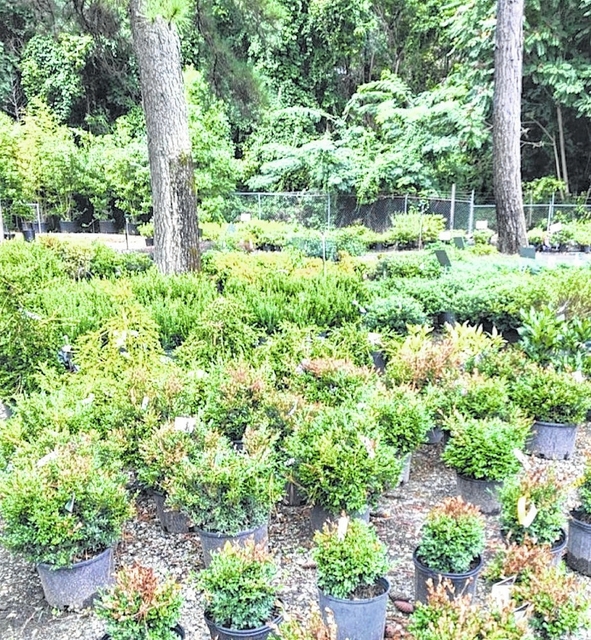PENDLETON — Boxwood blight, a disease that can devastate the familiar shrub, has been detected for the first time in a South Carolina plant nursery, say inspectors with the Clemson University Department of Plant Industry.
The finding follows the discovery in March of the disease in a landscape near Florence. That case was suspected to have come from an out-of-state nursery and likely had been in the landscape for several years.
In this case, inspectors are conducting “traceback and traceforward” investigations of stock bought and sold by the Upstate nursery to try to determine the movement of the disease.
“The infected nursery is working with us to destroy all affected plants and clean up the affected nursery environs,” said Steven Long, who manages the Department of Plant Industry. “The nursery also has agreed to follow a strategic document created by DPI that lays out a plan of eradication and clean-up. DPI will be monitoring their adherence to the process along the way and will be working with them to install other measures of protection in the future.”
Caused by a fungus, Cylindrocladium buxicola, boxwood blight attacks the above-ground portions of boxwoods, not the roots. It starts with light or dark brown spots or lesions on infected leaves, but can spread to stems, causing black cankers and twig death. Infected foliage often drops from the plant.
Found throughout Europe, boxwood blight was first discovered in the United States five years ago. It has since spread to 11 states.
“The most likely means of contracting boxwood blight is primarily through the purchase of infected nursery stock material,” Long said. “Once in a given area, it can be spread by homeowners and landscapers failing to properly sanitize pruning equipment as they move through their yard or community.”
Clemson Extension agents have been advised to be on the lookout for the new disease and to teach landowners and landscapers ways to reduce its spread. The Department of Plant Industry has posted a website with updated information about it.
“Boxwood blight can spread to blight all foliage and stems on susceptible boxwood cultivars. It is extremely detrimental to many boxwoods and almost always requires plant removal and extensive environmental cleanup,” Long said. “It can be confused with other boxwood diseases and disorders, but Clemson’s Plant Problem Clinic can analyze plant samples suspected of the disease. If you observe symptoms on your boxwoods, it is important to have the disease accurately identified by a specialist.”
The Department of Plant Industry conducts certification and inspection programs related to plant nurseries and enforces state laws and regulations that protect the state from exotic and invasive species.
It is part of Clemson’s Regulatory Services branch, which includes departments that regulate pesticides and structural pest control, verify that fertilizer and lime meet standards and labeled guarantees, conduct seed and organic certification programs, diagnose plant pests and ensure readiness to respond to catastrophic events that impact the state’s agriculture.


